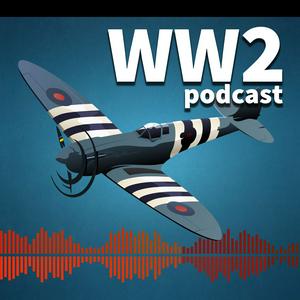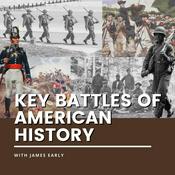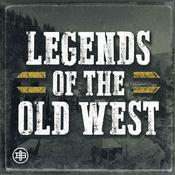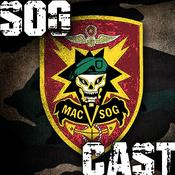292 episodes

289 - Charles De Gaulle
12/15/2025 | 1h 3 mins.
Charles de Gaulle remains one of the most distinctive figures to emerge from the Second World War. Soldier, writer, leader in exile, and later the creator of the Fifth Republic, he played a central role in reshaping modern France. His relationship with Winston Churchill, their shared struggle during the war, and the influence both men continued to wield long after the fighting ended make him a fascinating subject. In this episode, I speak with historian Richard Vinen, author of Last of the Titans: Churchill and de Gaulle. His book explores the lives of de Gaulle and Churchill and sets their wartime partnership within a wider story of national identity, political power, and the long shadow of past greatness. Richard guides us through de Gaulle's early years, his outlook as a soldier, his time in London, and the reasons he became such a commanding presence in French public life. Last of the Titans: Churchill and de Gaulle is also available as an audiobook on Audible. patreon.com/ww2podcast

288 - Beyond Burma: The Forgotten Armies
12/08/2025 | 24 mins.
The fighting in Burma during the Second World War was among the most demanding of the entire conflict. Soldiers faced dense jungle, monsoon rains, disease, and a determined enemy — conditions that made the campaign both brutal and complex. Yet for decades, Burma remained one of the least remembered theatres of the war. The men who fought there — British, Indian, African, and Burmese — became known as the "Forgotten Armies." A new exhibition at the National Army Museum in London, Beyond Burma: Forgotten Armies, seeks to change that. It explores not only the campaign itself but also the wider human and political stories that emerged from the fighting in Southeast Asia. In this episode of the WW2 Podcast, I visit the museum to speak with Dr Alan Jeffreys, Head of Equipment and lead curator of Beyond Burma. We discuss the exhibition, its themes, and the challenge of bringing this complex history to life. patreon.com/ww2podcast

287 - Tunisgrad: The Battle for Tunisia and the Fall of Tunis
12/01/2025 | 40 mins.
By late 1942, after the success of Operation Torch, the Allies had finally gained a foothold in North Africa. What followed was a hard-fought and often overlooked campaign in Tunisia. For six months, British, American, and French forces battled determined Axis troops for control of the last corner of Africa held by Germany and Italy. It was a campaign marked by tough lessons, uneasy cooperation, and moments of heroism — one that would shape how the Allies fought together for the rest of the war. In this episode, I'm joined by historian and author Saul David to discuss his latest book, 'Tunisgrad: How the Allies Won North Africa and Set the Stage for D-Day'. Saul brings to life the soldiers, commanders, and decisions that defined the Tunisia campaign and paved the way for the Allied invasion of Europe. patreon.com/ww2podcast

286 - Rhineland, 1944-45
11/24/2025 | 53 mins.
By the autumn of 1944, the Allies had driven across France and Belgium and reached the borders of Germany. Ahead of them lay the Rhine — a vast natural barrier and the last line of defence protecting the heart of the Reich. What followed was some of the most intense and costly fighting of the war in Western Europe. From the bitter battles around Aachen and the Hürtgen Forest, through the crossing operations of Plunder and Varsity, to the dramatic capture of the bridge at Remagen, the campaign for the Rhineland was brutal, chaotic, and often overshadowed by the more famous Battle of the Bulge. Yet it was here, on both sides of the Rhine, that the final collapse of Nazi Germany truly began. To help tell that story, I'm joined by military historian Anthony Tucker-Jones, author of Rhineland, which charts the campaign from the German border battles of late 1944 through to the end of the war in 1945. Rhineland is also available on Audible and Spotify. patreon.com/ww2podcast

285 - The Nuremberg Psychiatrist
11/15/2025 | 36 mins.
In the aftermath of the Second World War, the Allies brought twenty-four of Hitler's most senior figures to justice at Nuremberg. Among them was Hermann Göring — once Hitler's designated heir and still a commanding presence, even in defeat. Before the trial began, the U.S. Army assigned a young psychiatrist, Captain Douglas Kelley, to assess whether these men were mentally fit to stand trial. For Kelley, it was the professional opportunity of a lifetime: a chance to explore the minds of the Nazi elite and discover what made them capable of such atrocities. What he found was far more complex and unsettling than expected. Kelley's professional curiosity evolved into a disturbing psychological duel, especially with Hermann Göring — a man both monstrous and magnetic, whose personality thrived even in captivity. In this episode, I speak with Jack El-Hai, author of The Nazi and the Psychiatrist: Hermann Göring, Dr. Douglas Kelley, and a Fatal Meeting of Minds at the End of WWII. Jack draws on Kelley's long-hidden papers and medical records to tell this extraordinary story, which has also inspired the upcoming 2025 film Nuremberg. Please note that this episode includes a discussion of suicide, which some listeners may find distressing. patreon.com/ww2podcast
More History podcasts
Trending History podcasts
About The WW2 Podcast
Listen to The WW2 Podcast, Rachel Maddow Presents: Burn Order and many other podcasts from around the world with the radio.net app

Get the free radio.net app
- Stations and podcasts to bookmark
- Stream via Wi-Fi or Bluetooth
- Supports Carplay & Android Auto
- Many other app features
Get the free radio.net app
- Stations and podcasts to bookmark
- Stream via Wi-Fi or Bluetooth
- Supports Carplay & Android Auto
- Many other app features


The WW2 Podcast
download the app,
start listening.







































